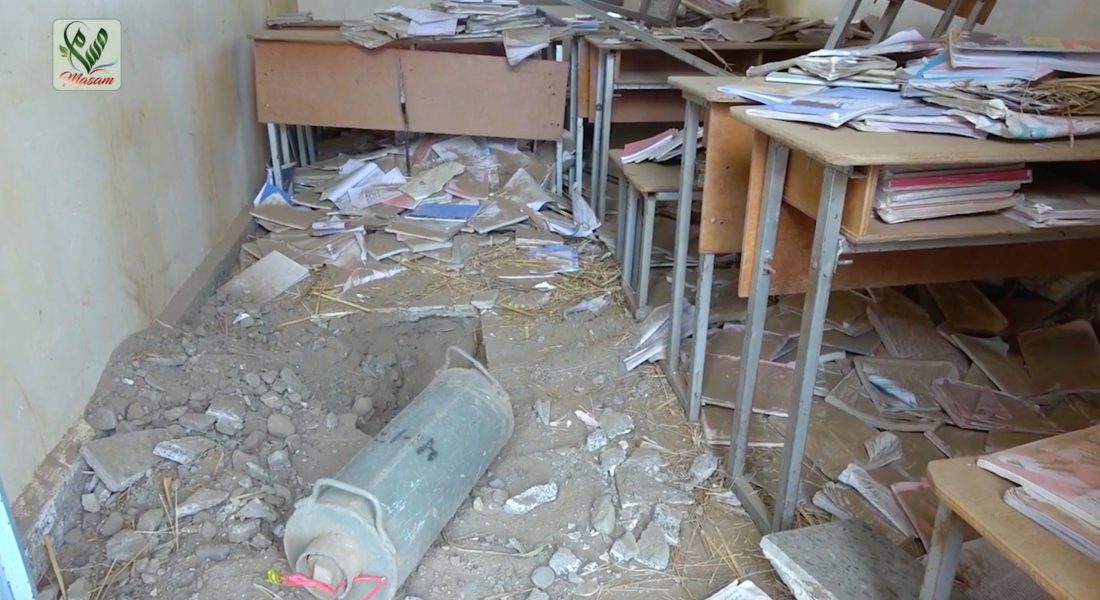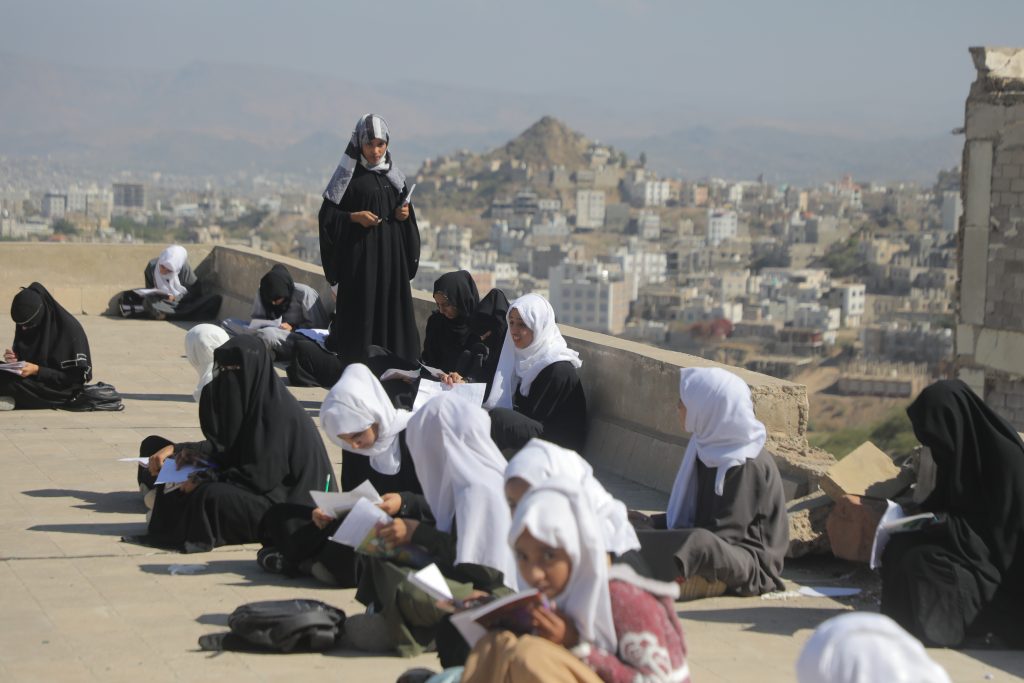Yemen has continued to witness the deterioration of the educational process, due to the partial and total destruction of schools by landmines and improvised explosive devices (IEDs).
According to information obtained by Project Masam, these mines targeted 344 schools in six Yemeni governorates, which led to the injury of a large number of students and teachers and the disruption of the educational process in these areas.
These mines were deliberately and randomly laid in large numbers around schools and in their internal courtyards and classrooms in Taiz, Marib, Hodeidah, Shabwa, Hajjah, and Al-Jawf. Large, camouflaged IEDs may have had the intention to injure or kill anyone returning to a number of these schools.
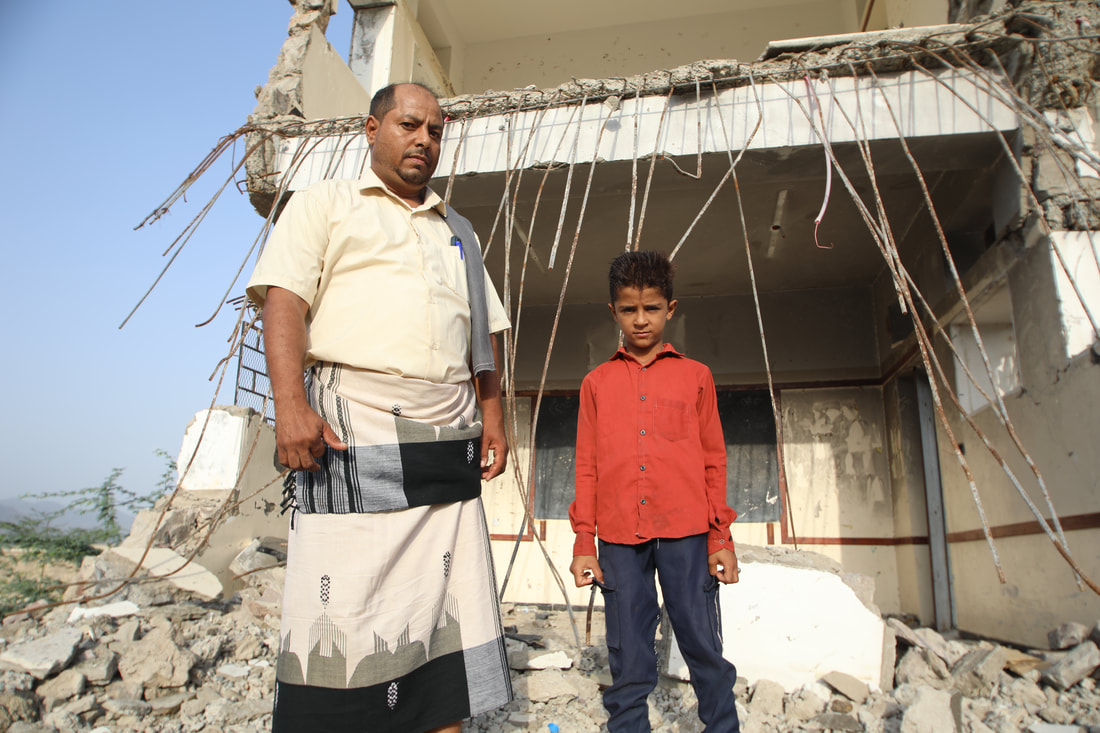
Ahmad Mohamad Al Barakani, 33, and his son Marwan, 10, pose in what would have been a classroom. Al Shaab School welcomed between 700 and 800 students before the war and the subsequent explosion caused by landmines and IEDs stored in classrooms. Credit: Elsa Buchanan for Project Masam
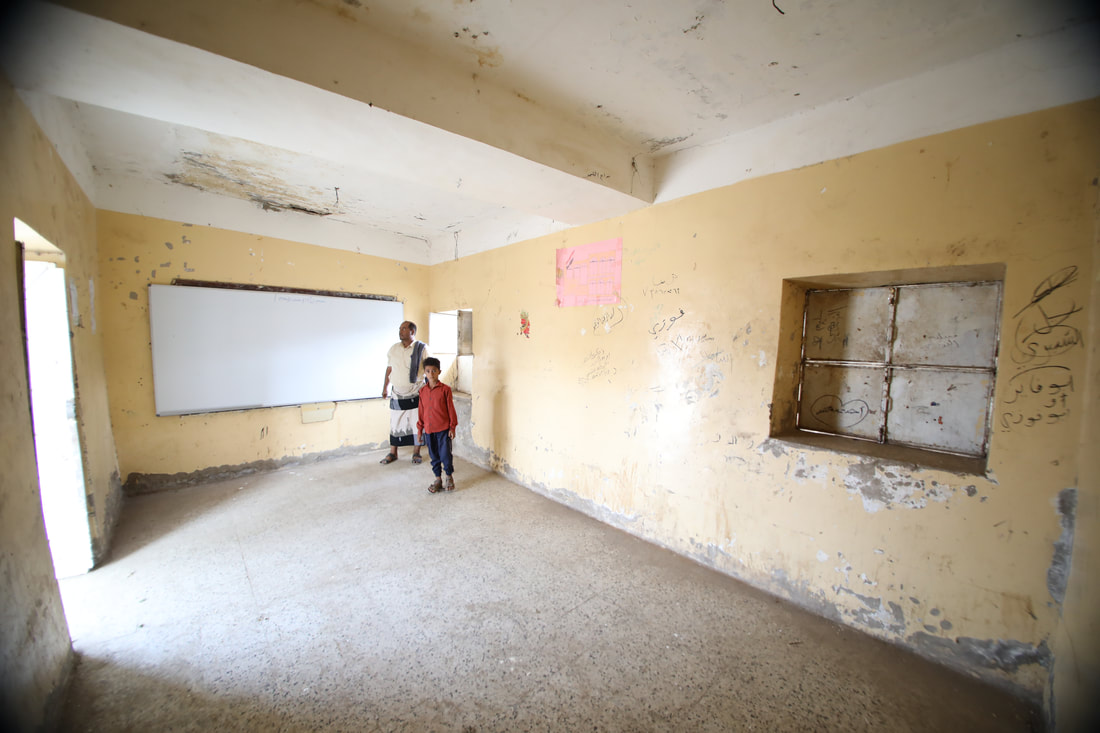
The school can only welcome 300 students now – some were displaced, others left for other far-flung schools, while others dropped out of education all together. 300 students are divided into four remaining classrooms. Credit: Elsa Buchanan for Project Masam
Hundreds of schools and students impacted by landmines
In Taiz governorate, which is located in south-western Yemen, 85 schools were mined – 30 of which were fully destroyed, and 55 partial destroyed.
According to the supervisor of Project Masam’s demining teams in Taiz, 221 male and female students were either killed or injured by these landmines and IEDs planted in schools.
In the northeastern governorate of Marib, which hosts the largest number of displaced people in Yemen with a rate of up to 60% of the displaced distributed over more than 200 camps, landmines have deprived more than 54,000 students of their right to education after targeting 195 educational facilities in the governorate, according to a human rights report issued by the human rights office in the governorate.
The figures registered by the human rights office reveal that the Houthi militias targeted these educational facilities in Marib with missiles, strikes, incursions, and military use (as temporary bases or weapons storage).
This led to the destruction of 21 educational facilities and the partial destruction of other 78 schools and educational facilities. An additional 35 educational schools were rendered inoperable because of military use, training, and storage of weapons and mines. They are still used in military actions, the human rights office added.
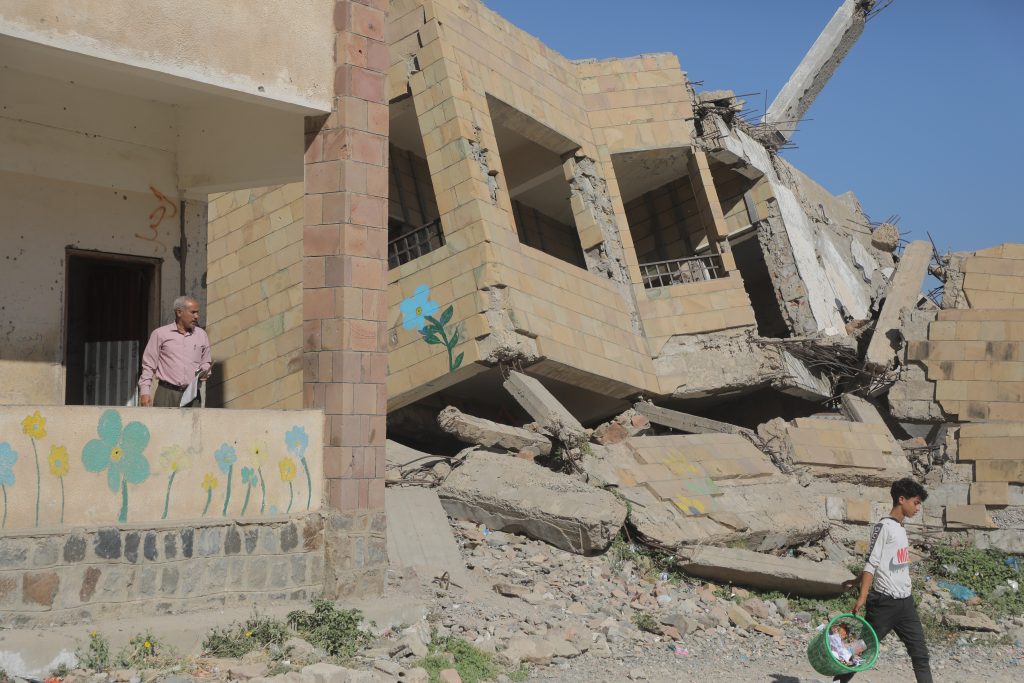
A teacher looks on as student walks past schoolrooms and administrative office destroyed by IEDs and landmines in Ibrahim Aqeel School in Yemen’s Taiz. Credit: Elsa Buchanan for Project Masam
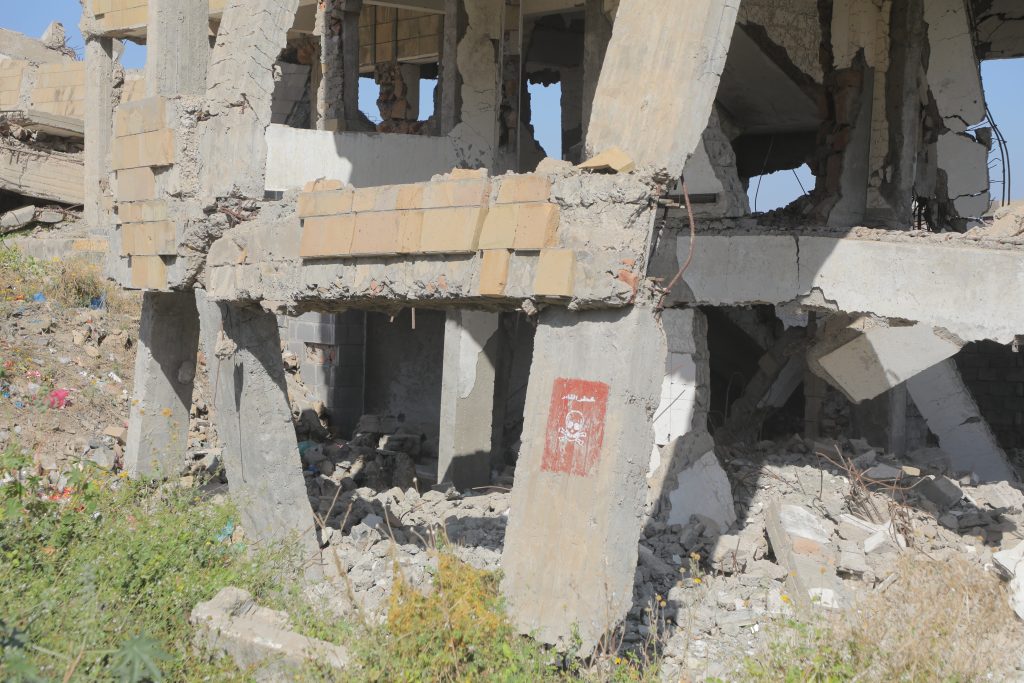
Classrooms and administrative buildings at Ibrahim Aqeel School in Yemen’s Taiz was used as a storage depot for landmines and IEDs by Houthi militias when they occupied parts of the city. Credit: Elsa Buchanan for Project Masam
Thousands of students without schools
The systematic targeting of educational institutions in Marib has led to the deprivation of more than 54,000 students of education, while about 10,000 students have returned to school, whether in their villages or alternative schools in their areas of displacement.
In the Hodeidah governorate, west of Yemen, 22 schools were mined, 13 schools were completely destroyed, and three others were partially destroyed.
Project Masam succeeded in securing six schools and removing explosive devices from inside classrooms.
In the Shabwah governorate, south of Yemen, IEDs and landmines were laid inside classrooms and on the roads leading to 21 schools. This number includes 15 schools in the Ain district and six schools in the Usaylan and Bayhan districts.
Thanks to the efforts of Project Masam’s demining teams, which secured those schools, the educational process was resumed normally in those districts.
Mines in the Hajjah governorate, northwest of Yemen, destroyed 18 schools, most of which were destroyed completely including eight schools in the Hayran district, of which seven schools were completely destroyed.
This resulted in the deprivation of 5,045 students of education distributed over five residential areas in the city of Hyran.
Six schools in the Midi district, three schools in Haradh city, and one school in Bani Hassan district were destroyed as well.
Meanwhile, in the Al-Jawf governorate, northeast of Yemen, three schools were mined, disrupting education and forcing the dropping out 2,500 students. According to the governorate’s human rights office, mines injured 18 teachers and 18 male and female students.
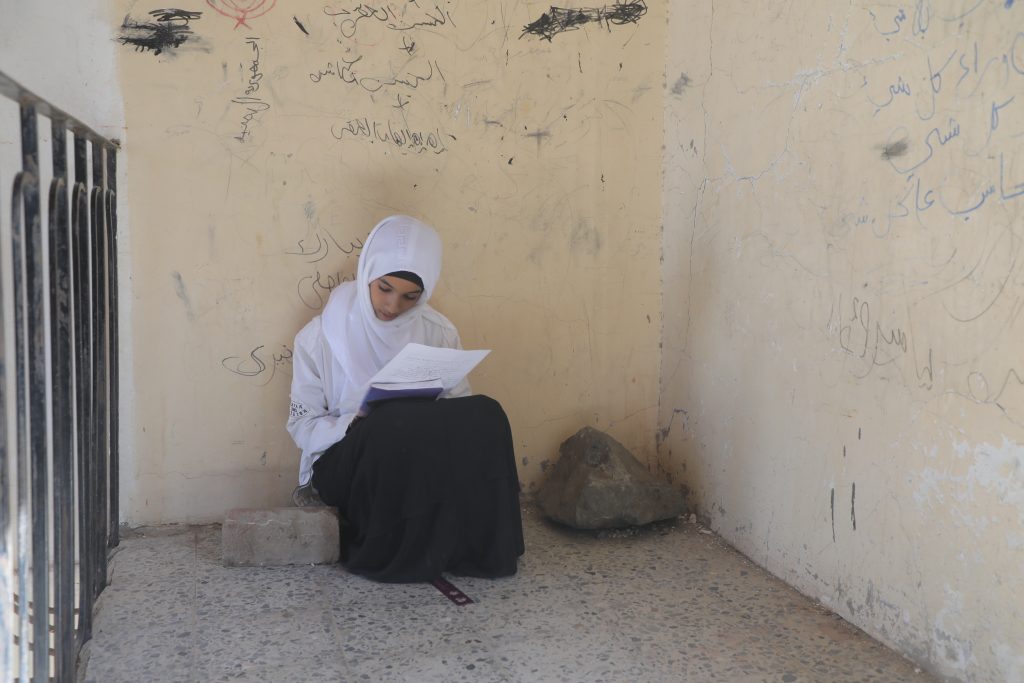
Mariam Fouad, 13, from Habil Salman in Taiz, is now in 8th Grade. She was unable to attend school for two years due to the war and the presence of landmines in her school, Ibrahim Aqeel School. Credit: Elsa Buchanan for Project Masam
Yemen’s educational disaster
The destruction of schools by mines and IEDs is an educational disaster in Yemen.
In this context, the Yemeni Deputy Minister of Education, Dr. Ali Al-Abab, confirmed that nearly 400 schools in several Yemeni governorates have been affected by mines and that thousands of students dropped out of school due to their parents’ fear that they would fall victim to mines planted on the roads leading to schools, especially after hundreds of them were exposed to deadly accidents.
Hundreds of schools are no longer suitable for welcoming students because they were completely destroyed by explosive items, while many others were turned into military barracks and explosives depots, al-Abab said.
The Deputy Minister of Education also pointed out that the massive displacement of people from mined areas to safe areas has greatly affected education outcomes, and the large displacement movements taking place in several governorates; the most important of which are Marib, Al-Jawf, Taiz, and Hodeidah, have caused great congestion in public schools.
Therefore, the ministry resorted to using alternative classrooms that are not suitable for education, most of which lack the minimum educational tools that help students, especially in displacement camps.
The Houthi militias have exploited the international support dedicated to the education process to recruit students and train some of them on the process of making and planting mines, al-Abab claimed.
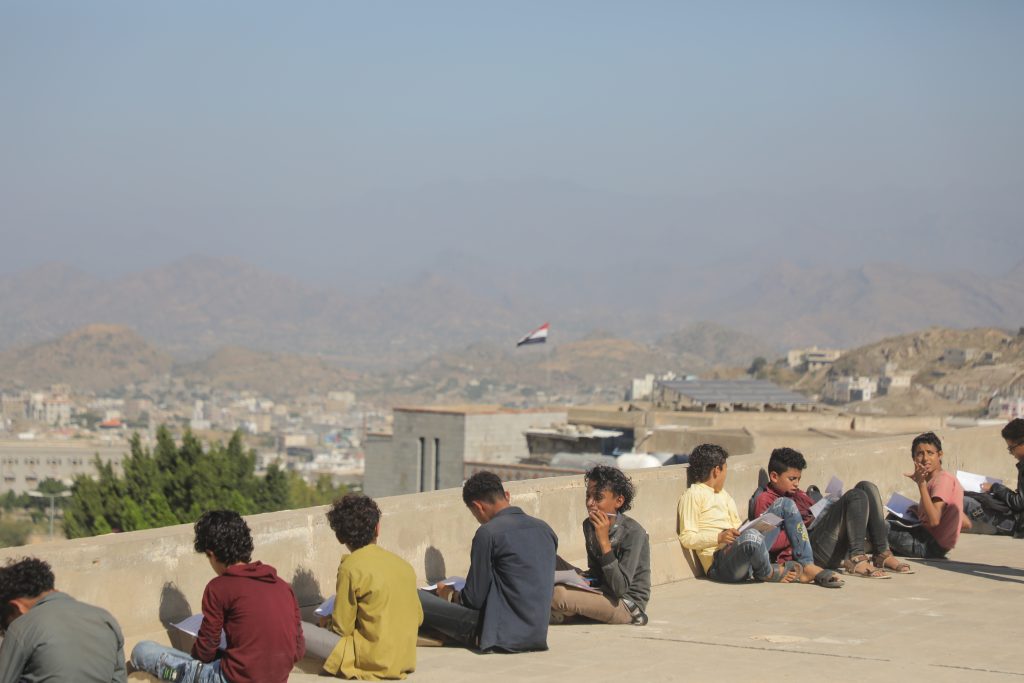
Because six classrooms were destroyed by landmines and IEDs, students at Ibrahim Aqeel School are forces to take their Arabic language exams on the surviving building’s rooftop in the blistering heat because of lack of space in remaining classrooms. Credit: Elsa Buchanan for Project Masam
Need to clear all schools of landmines and IEDs
The Yemeni Deputy Minister of Education added, over the past few years of its humanitarian landmine clearance work in Yemen, Project Masam has succeeded in securing a large number of schools in several governorates, restore the educational process, and reduce the dropout of a large number of students.
He stressed that the right to education must be protected and guaranteed for all children in Yemen, and local and international bodies must act to preserve this basic right.
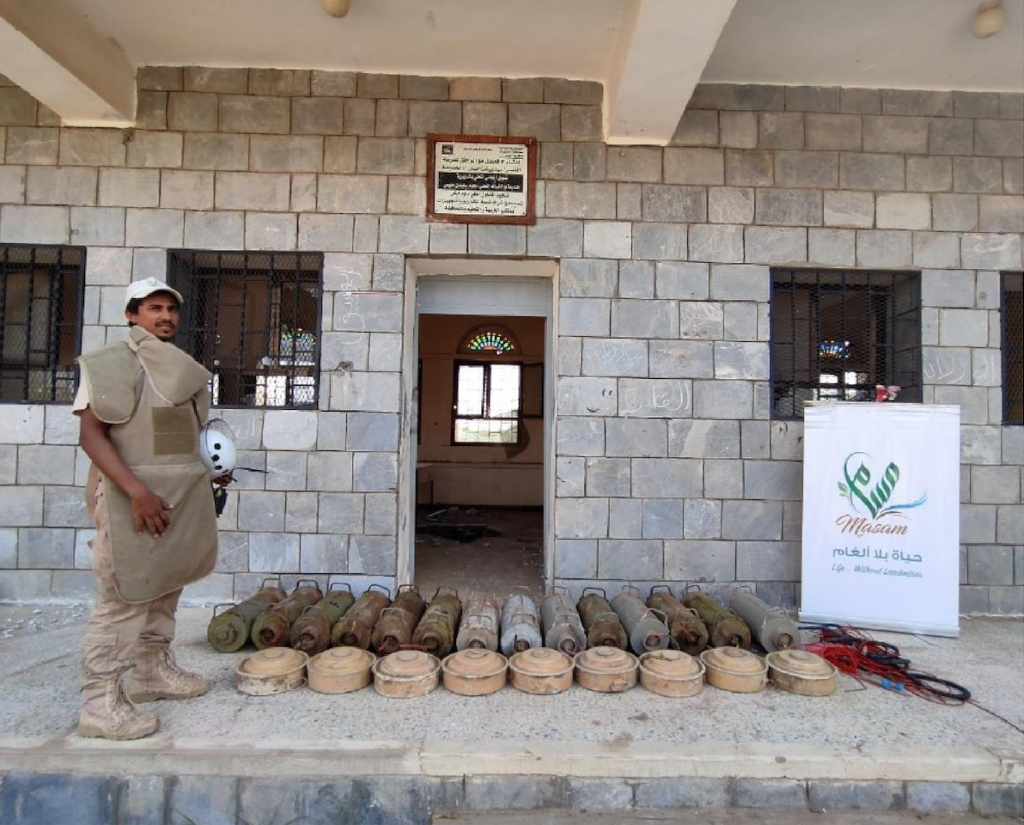
Project Masam demining Team 26 Leader Sami Saeed poses in front of large charge IEDs and ant-tank mines found planted in Al-Nasser School and nearby water tower in Bait Beish, Hays in Yemen’s Hudaydah governorate. Credit: Project Masam

